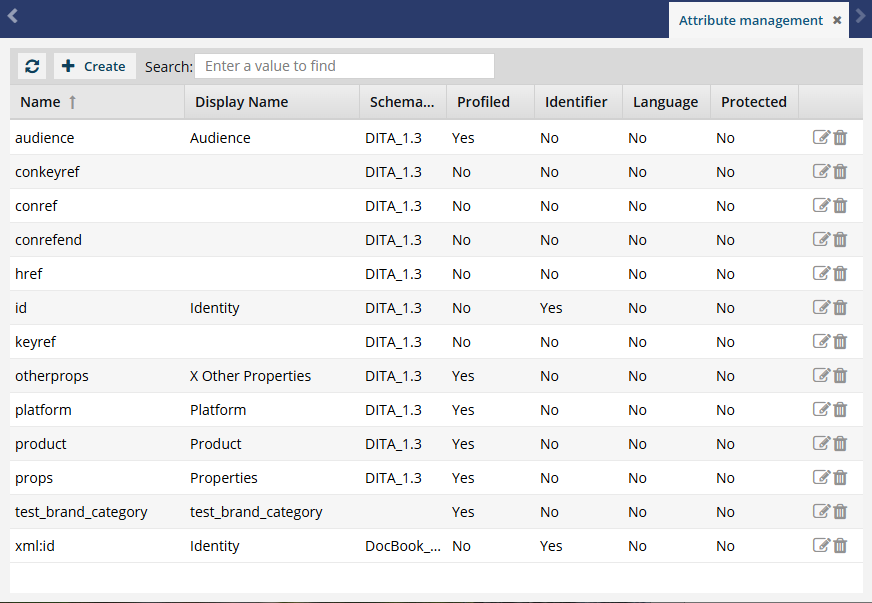Manage attributes
You can create and update attributes to provide more information about XML elements you use in your content. Specifically, attributes define properties of elements. An XML element can have multiple attributes, and attributes are always a name-value pair.
![]() For more information on when or why to use attributes, read the following sections in the Attributes FAQ:
For more information on when or why to use attributes, read the following sections in the Attributes FAQ:
- What is the difference between an element and an attribute?
- Why not just create a new element?
- Why would I want an attribute to be profiled?
- Why do I need an attribute that is a component identifier?
- Why do I need an attribute that is a language identifier?
- Why would I want to protect an attribute?
- Where can users select the attribute after I add it?
- Where do administrators manage attributes?



To manage attributes, you can:
 Refresh the list of attributes to see the latest data. This is especially important to use after making updates to the attribute list or an attribute's properties.
Refresh the list of attributes to see the latest data. This is especially important to use after making updates to the attribute list or an attribute's properties. Create a new attribute: add attributes to provide more information about XML elements and configure component relationships in the system.
Create a new attribute: add attributes to provide more information about XML elements and configure component relationships in the system.  Create a new attribute
Create a new attribute Update an attribute: redefine properties of elements, such as Profiled, Identifier, Language, and Protected.
Update an attribute: redefine properties of elements, such as Profiled, Identifier, Language, and Protected.  Update an attribute
Update an attribute Delete an attribute: permanently remove attributes if you no longer need to provide that unique piece of information about XML elements.
Delete an attribute: permanently remove attributes if you no longer need to provide that unique piece of information about XML elements.  Delete an attribute
Delete an attribute- Search for an attribute: search for text in the following columns:
- Name
- Display Name
- Sort the list of attributes: use any column to change the order that the attributes are listed so you can see what you need first and avoid scrolling through the entire list.